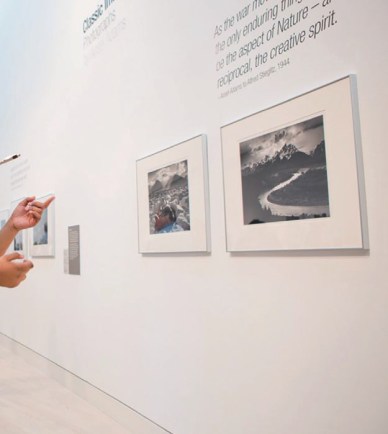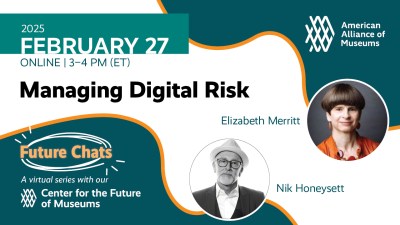
What does excellence at a small museum look like? My experience moving from a large history museum, with a full-time staff of 77 and an annual budget of $9.3 million, to a small art museum with a full-time staff of three and an annual budget of $382,000, taught me the importance of focus, prioritization, and vision.
The Springfield Museum of Art in Ohio has been accredited by AAM since 1977. But somewhere along the way, we lost our culture of excellence. A stunning new addition in 1994 doubled the museum’s space, and an outstanding exhibition program became the focus of all activities. The museum brought in and curated art exhibitions that were high quality and cutting edge but lacked broad community engagement. Many in the community viewed the museum as elitist. In response to reduced support from a declining population, the museum closed its art school and stopped offering education programs. This cost-cutting measure seemed prudent at the time, but the longer-term result was declining attendance and membership revenues. The museum continued to struggle financially, and the board realized we had to change in order to survive. Our plan was several years old and out of sync with our financial situation and community.
We rebuilt our culture of excellence by listening to our community, following the Alliance’s accreditation process, forming a strategic plan and refocusing on our educational mission. We reshaped our operations to do less, but with more community involvement. In the past year, we increased attendance by 131 percent, more than doubled our membership and overcame a several hundred thousand dollar deficit to end the year in the black. Making the change to become more relevant to our community took two years.

With the Characteristics of Excellence—the Alliance’s overarching, core standards for all museums—at the center of our work, our actions to become financially responsible and our programs using art education to connect with audiences were critical to earning renewed respect from the community. These initiatives translated into increased support and participation.
A good plan kept us focused on outcomes and honest about performance measures. In a small museum with fewer staff (or maybe no paid staff), a good institutional or strategic plan determines how best to allocate resources. Planning is even more important when, as in small museums, each staff member wears many different hats and changes them frequently, quickly adapting skills to match the task at hand. Small museums are ideally suited to striving for excellence in small steps because one or two staff members often handle problem-solving, planning and implementation.
The Springfield Museum of Art’s most recent reaccreditation site visit was scheduled three months after I began my job as director. The experience—particularly the site visit—was informative and affirming. Our reaccreditation, however, was tabled for a year because we didn’t have a good strategic plan. The Visiting Committee and Accreditation Commissioners sent a clear message that we needed to take stock of our resources, figure out how to be relevant to our community and develop a new plan with measurable results. At the time I was crestfallen but later recognized this as a
good opportunity to make significant changes and do an even better job. An imbalance of expenses to income put the board and staff on the same page, along with data from a membership survey that supported our decisions.
Our fellow cultural organizations had been using educational activities to demonstrate value and connect with audiences. Community members shared with me their memories of making art in the museum’s classes and the emotions they had felt. As part of the new strategic planning process, we identified “art education” as the way people in the community connected with the museum. The museum’s operations and staffing, however, weren’t structured to make this important shift to a renewed focus on art education. I made the difficult but necessary decision to completely change our staffing, allowing us to manage our finances more responsibly and connect with the community. Staff size was reduced from three full-time and three part-time to two full-time and two part-time positions. (Yes—I made our small museum even smaller!)
The staff believed in and worked toward the vision of using art education experiences at the museum and in the community to build strong, relevant relationships with our audiences. We had to produce results quickly, but we prioritized quality over quantity. We focused on creating and implementing each art education program really well, conducting formative evaluation along the way.
Knowing the value our community places on youth education, we offered to develop a partnership art education program with six organizations that had successfully served children. We wanted our partners to be representative of the whole community and recognized for their work making a difference in children’s lives. We reached out to artists, at-risk youth groups, an after-school program for English language learners and the regional preschool program. At the end of the first year, we expected a few partners to drop off, but every organization wanted to not only continue but do more with us.
The small size of our museum did not make this work any less complicated, rigorous or impactful. We needed to communicate continuously among staff and with our board, membership, donors, and community. We wanted to share what we were doing to make a difference. Telling the great stories of how your audiences engage with the museum can demonstrate why your institution matters to your community and help build a culture of excellence.
\For us, the reaccreditation process catalyzed a stronger culture of excellence, but any part of the Continuum of Excellence can serve this function. Building and sustaining this culture was not always easy, and we’re not there yet. As at any museum, it should be seen as an ongoing activity.
Ann Fortescue is executive director, Springfield Museum of Art, Springfield, Ohio. She also serves as an Accreditation Commissioner and as a member of the advisory panel for the Alliance’s new Small Museums Accreditation Academy.









Comments